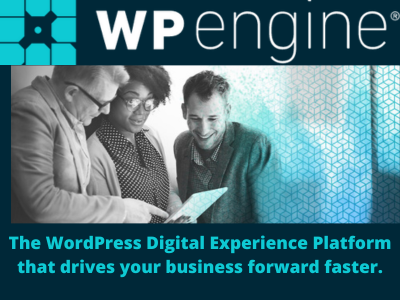1. Domain Name
We recommend NameCheap due to its competitive pricing, 24×7 customer support over chat, and free email forwarding feature.
2. Web Hosting
Despite a large number of great options from open source and proprietary technologies, we narrow down to open source, easy -to-use WordPress for a starter website. In WordPress, we suggest to go with a managed WordPress plan, making things user friendly for you as an end user.
Once again, there are so many great web hosting service providers. Our recommendation here in no way challenges them. Based on our usage and experience, we suggest NameCheap for those with a limited budget.
Recently, 10Web has attracted a lot of popularity for its AI-induced way to launch a website built with WordPress. Although website builders have been long there, 10Web has integrated AI with WordPress in a novel way. All you need to do is to fill few prompts like you do using ChatGPT and within minutes you have a complete, unique WordPress site matching your niche. Their starter yearly pricing is 120$ or 10$ per month when paid yearly and 20$ when paid monthly.
For those looking for mission critical sites, we recommend Nexcess and WP Engine.
For your e-commerce shop, WooCommerce plugin can be activated for free with any WordPress plan. Keeping in mind specific needs for an e-commerce store, most managed WordPress hosting service providers now have a special package for e-store and Nexcess and WP Engine no exception.
While cloud computing service providers like AWS and Google Cloud provide high-end web hosting, this post is not targeted for developers and trained web professionals.
3. Content Creation
Content is at the heart of perhaps any type of online business. While for a publishing/blogging niche, content is their core specialization, even for a software company focused on developing a software product, there is a need for documentation for which technical writing skills come into play. For an online store, product description forms an important component that in addition to generate interest about the product also helps bring audience to the site through search engines based on keywords used as part of product descriptions.
Relevant article by Interact: How to find SEO keywords you can actually rank for
In addition to text-based content (such as articles, blog posts, product descriptions, whitepapers), images, podcasts (audio files), and videos also qualify as content. Images are mostly used as part of text-based content and videos.
It is recommended to take help of AI writing tools like ChatGPT and Tailwind Ghostwriter to generate initial copies based on prompts/feeds provided. Since such AI tools generate content based on prompts provided, the choice exercised by a trained content writer filling prompts can differentiate the output. The copies generated by AI writing tools these days are accurate in terms of spelling, grammar, and punctuation. The content writer will more function as an editor reading the content generated by AI tools and depending on the use case revise before pressing the publish button.
Online forms are used to collect data from users. Online forms are not just used to gather user data for say completing a sales transaction but can be leveraged to be more interactive with your website audience like by creating quizzes (using a software like Interact).
Branding as part of content strategy
When it comes to logo, you can spend a ton of money hiring a sophisticated logo design professional. On the contrary, you can have a logo at a reasonable price designed by yourself using software like Canva and Looka. We recommend Canva if you are in tight budget (even free plan by Canva can do, pro plan starting from 499 INR/per month). Check Canva pricing here. Beyond one-time logo, with a monthly Canva subscription, you can take care of all your image/banner/video creation needs.
Looka with a slightly higher budget can help come out with a great logo in an automated way by just filling fields like name and tagline of your business, preferred colors.
4. Email Marketing
Once you have your website live, your focus shifts on building subscriber lists and engage with your subscribers.
While we use Moosend, we recommend Omnisend for e-stores given their expertise in e-commerce and additional SMS feature.
5. Organic SEO (Search Engine Optimization)
The first place to explore once your business starts is stand out on Google with a free business profile.
For Pinterest, Instagram, and Facebook marketing, Tailwind helps automate the process by coming out with fresh designs that align with your brand (Tailwind Create) to scheduling and sharing from one dashboard. We are talking organic social media optimization; that is, opportunity available for free to Pinterest/Instagram/Facebook account holders.
RelateSocial is a newly-introduced social media manager tool by NameCheap that supports more social media platforms in its Pro plan (including Twitter, Linkedin, Google Business profile, not supported on Tailwind) but seems lacking design capabilities of Tailwind Create.
6. Paid Ad Campaigns
Given the dominance of Google Search, consider starting a Google Ad campaign choosing your targeted keyword, location that you wish to target, and daily budget. Similarly to make your business visible on social media, there are paid campaigns on Facebook, Pinterest, Instagram, Twitter, and Linkedin.
Another paid/inorganic way to speedup your marketing activities is to subscribe to B2B database services like the ones by Apollo.io and ZoomInfo.
- Relevant article by Interact: Organic Ads vs. Paid Ads: How to Use Both in Your Business
- List of software (SaaS, PaaS, IaaS, etc.) and other offerings with free developer tiers.
Quotation Form
For the above tasks, you can also hire us to get your work done in a professional way.
Last Updated on November 29, 2024 by Admin






Leave a Reply